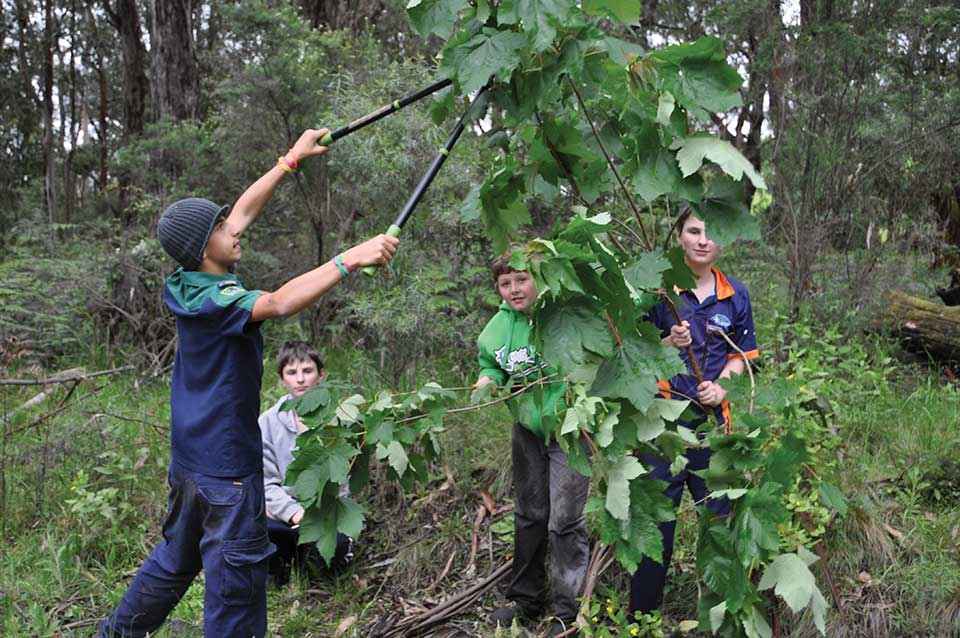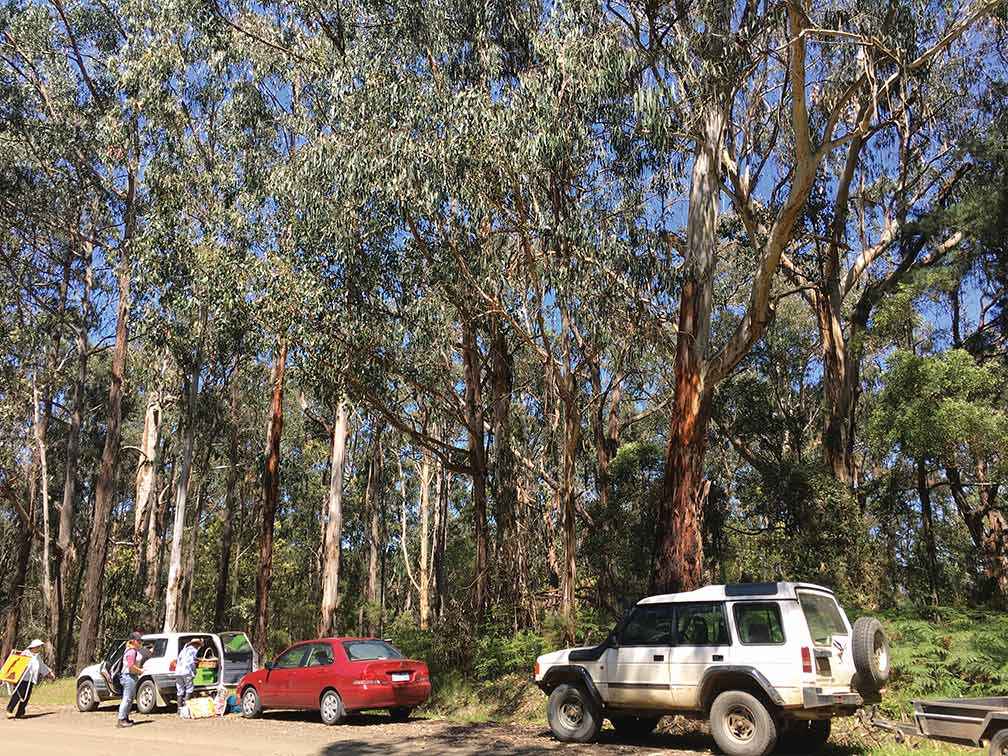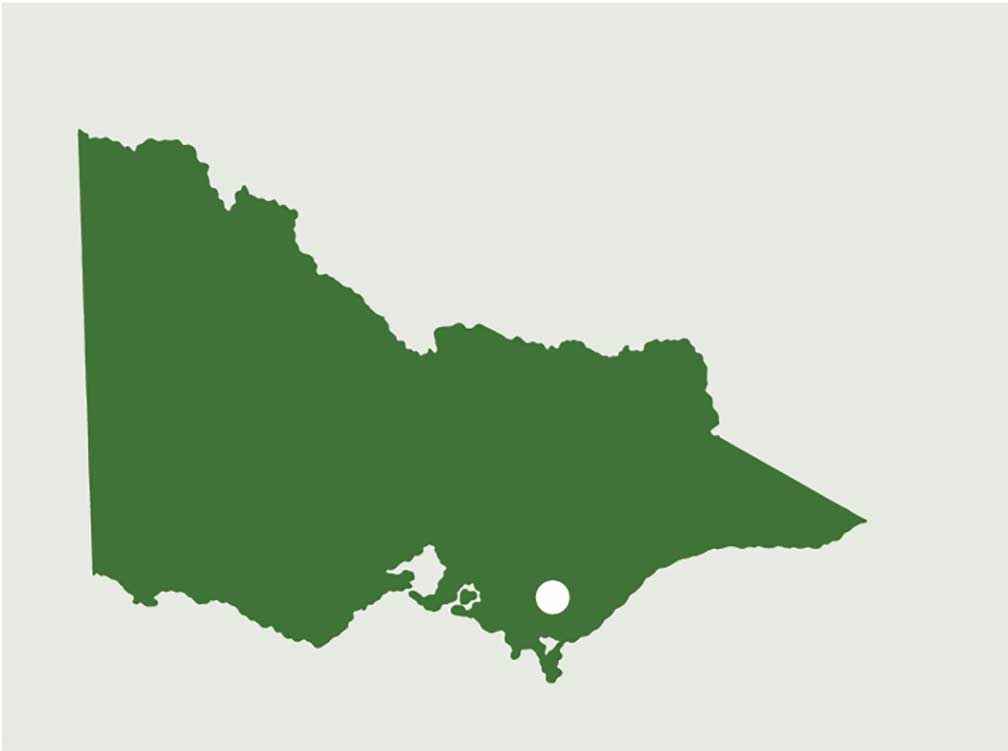Victorian Landcare Magazine - Summer 2022 , Issue 83

The first principle of biodiversity enhancement is to protect remnant vegetation. Since the Yinnar-Yinnar South Landcare Group (YYSLG) began in 2007, we have been working to eradicate an infestation of sycamore maples (Acer pseudoplantanus) in the Budgeree Bushland Reserve at Yinnar South. This is a small, south-facing reserve in the Strzelecki Ranges.
YYSLG contacted Latrobe Valley Field Naturalists Club not long after we got underway. A member of their botany group surveyed Budgeree Bushland Reserve and the Boolarra Nature Conservation Reserve and provided us with lists of the plant species found. These lists have been a valuable reference for subsequent local revegetation projects.
Boolarra is in much drier and more open country on the Gippsland Plain. Our group’s area includes both these types of terrain and vegetation communities.
The Budgeree plant survey revealed the reserve had an excellent representation of locally indigenous flora. The only weed of significance was the infestation of sycamore maple that was shading out other plants and preventing new growth from getting established.
We researched maple control methods and learnt that herbicides are generally ineffective and that the physical removal of plants, especially seedlings, was required. Thankfully we were all fifteen years younger when we began the project, and some hard work by volunteers with chainsaws took down most of the trees that were large enough to set seed.
We used the most effective of the herbicides in sponge applicator bottles to paint cut stems or trunks. We’ve also used tree pullers and loppers on medium sized saplings in our subsequent annual maple massacres. One of our main activities throughout has been finding and hand pulling two-leaf seedlings.
This project has been a resounding success for local biodiversity. It has promoted the regeneration of native flora in an area of the Strzeleckis that were already legally protected as declared reserves. The site is now able to be studied to enhance our knowledge of endangered vegetation in the area.
The project has also been inspiring and sustaining for our group. YYSLG members have learnt an enormous amount about local indigenous plants and ecosystems. We have enjoyed working together and involving others in our community on a project that is achievable and meaningful.

Above: Choosing a site on a quiet road with enough room to park is a consideration when
planning a working bee.
We were able to inspire the forestry company that leases the other side of the creek to treat the maples on their land, which has helped enhance biodiversity and riparian habitat as native plants return. We were successful at persuading an adjoining landholder to eradicate some large old maples that were seeding into the reserve.
The project has helped to publicise YYSLG through advertising our working bees and reporting on volunteer efforts in the local news media. It has also required very little money, so we have been able to avoid the work of writing funding applications.
Sometimes newer Landcare groups struggle to find planting sites and funds for revegetation projects. For groups wanting to enhance biodiversity and looking for a cheap community project that’s pretty easy to execute, we can recommend weeding existing high quality native vegetation. It’s a great way to start, especially if the area is protected from future land use change and the dominant weed species is relatively easy to find and remove.
Jay Duncan is an active member of the Yinnar-Yinnar South Landcare Group.
For more information email jduncan@speedweb.com.au

Above: Location map - Yinnar